Top 20 UK Local Authorities with the Highest Superfast Broadband Uptake
Ofcom’s most recent data reveals that superfast broadband (25Mbps+) ISP technology is now available to 65% of homes and businesses in the United Kingdom and yet just 7% of premises have actually adopted it. But where is superfast internet access most popular and why? The city of Portsmouth tops our new list with a take-up of 15.2%.
ISPreview.co.uk took another look at the regulators latest data and re-organised it to display the top twenty local authority areas where take-up of superfast broadband is highest. As you’d expect the vast majority end up being represented by large towns and cities, which is because the private sector funded roll-out of related services has so far predominantly focused on urban areas (i.e. those most likely to deliver a good return on the ISPs investment).
Advertisement
The Top 20 Local Authority Areas
In these twenty areas the average availability of superfast broadband is a whopping 92.64%, which ranges from a low of 86.8% in Cardiff (Caerdydd, Wales) to a high of 99.1% in Derry (Londonderry, Northern Ireland), and the related take-up of superfast connectivity is 13.69% of premises.
It’s interesting to note that the overall broadband take-up in most of these areas remains a shade above the UK average of 71% (i.e. 73.29% for both superfast and standard broadband in the top 20), which shows that superfast connectivity hasn’t yet had much of an impact on total broadband adoption. This is to be expected when focusing a roll-out on urban areas where good connections already exist. At the same time we shouldn’t forget that urban areas can also suffer from slow connectivity.
| Local Authority | Average Sync Speed (Mbps) | Percentage on Sub-2Mbps | Broadband Take-Up | Superfast Take-Up |
| City of Portsmouth | 17.9 | 6.20% | 75.00% | 15.20% |
| North East Lincolnshire | 22.5 | 4.40% | 65.30% | 15.10% |
| Luton | 15.2 | 10.60% | 75.50% | 15.00% |
| Castlereagh | 15.4 | 12.40% | 75.00% | 14.50% |
| North Down | 13.6 | 16.60% | 74.30% | 14.10% |
| Derry | 15.4 | 12.70% | 65.80% | 13.90% |
| Reading | 15.8 | 5.30% | 77.10% | 13.90% |
| Wokingham | 13.9 | 12.90% | 84.80% | 13.90% |
| Belfast | 19.2 | 5.60% | 64.10% | 13.70% |
| Dundee City | 20.4 | 5.30% | 68.30% | 13.60% |
| City of Brighton and Hove | 15.3 | 5.20% | 84.80% | 13.60% |
| Lisburn | 13.7 | 21.80% | 70.10% | 13.50% |
| Caerdydd – Cardiff | 15.6 | 11.00% | 74.80% | 13.40% |
| Newtownabbey | 14.5 | 12.70% | 75.20% | 13.30% |
| West Dunbartonshire | 19 | 4.60% | 67.20% | 13.30% |
| Hertfordshire County | 16 | 9.50% | 78.00% | 13.10% |
| Solihull District | 17 | 6.80% | 73.80% | 12.90% |
| City of Bristol | 16 | 3.20% | 75.10% | 12.80% |
| Hartlepool | 18.8 | 14.70% | 62.10% | 12.50% |
| Medway | 17.7 | 10.20% | 79.50% | 12.50% |
As you’d expect the average broadband “sync” speed for such areas, which comes in at 16.64Mbps (Megabits per second), is also higher than the national UK average of 12.7Mbps but not significantly so. Take note that sync speeds are more like a best line performance estimate, while real-world performance usually comes in a little lower. Ofcom’s August 2012 biannual speeds report found that real performance was closer to 9Mbps for the UK as a whole.
Furthermore we noted that high availability of broadband, be it delivered via superfast or standard broadband technology, doesn’t always seem to improve the percentage of connections that can currently receive a speed of less than 2Mbps. Even Derry, where superfast services are available to 99.1% of local premises, still reports that 12.70% have sub-2Mbps speeds.
Advertisement
Laura Kell, Point Topic (Telecoms Analyst), said recently:
“The digital divide isn’t just urban versus rural – it is becoming more and more another case of rich versus poor. Accessibility isn’t just about the physical availability of a network but the desire and financial ability of local populations to adopt broadband. This isn’t an issue just in remote rural areas but affects take-up in poorer inner cities too.”
Clearly the concept of “build it and they will come” can, in practice, often be a lot harder to get right, especially with issues like price continuing to be a significant barrier (superfast packages are often +£5 to £15 a month more expensive than traditional broadband services); this should improve over time. Lack of awareness about availability may be another factor, as too could be the fact that some superfast technologies (e.g. FTTC) often get a lot slower for homes that reside further away from their local street cabinet.
Meanwhile the government is investing around £1bn of public money, which must be matched by councils and the private sector, to help extend the reach of superfast broadband services to 90% of UK people by 2015 (the last 10% will still have to put up with minimum speeds of at least 2Mbps). This is important because the private sector investment, such as BT’s separate £2.5bn commitment, is only expected to help related services reach 66% of the UK.
On top of that the forthcoming 4G auction should make faster Mobile Broadband services available to “at least” 98% of people by around 2017. Combined these efforts, which will start to return the first tangible results during 2013 (i.e. upgrading old infrastructure), should help to extend superfast connectivity into many poorly served semi-urban and rural areas where there is often perceived to be a greater demand for such servers (i.e. because existing connections are often slow and unreliable).
But it’s interesting to note that some of the cities on our list, such as Brighton and Hove, Portsmouth and even Derry of all places, have recently won public Urban Broadband Funding (UBF) to help build ultra-fast broadband (80-100Mbps+) and faster wifi services in areas that have been neglected by the private sector. Some might find such decisions to be questionable, given the already high availability of faster connectivity.
Advertisement
It will be good to see how all this work changes the current level of national superfast broadband uptake.
Ofcoms Interactive UK Broadband and Mobile Maps
http://maps.ofcom.org.uk/
Mark is a professional technology writer, IT consultant and computer engineer from Dorset (England), he also founded ISPreview in 1999 and enjoys analysing the latest telecoms and broadband developments. Find me on X (Twitter), Mastodon, Facebook, BlueSky, Threads.net and Linkedin.
« BT Openreach Cuts Line Rental, FTTC and LLU Prices by £75m for UK ISPs

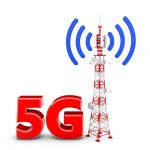
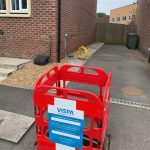
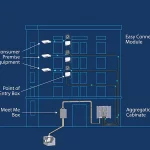





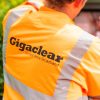
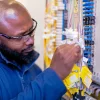






































Comments are closed